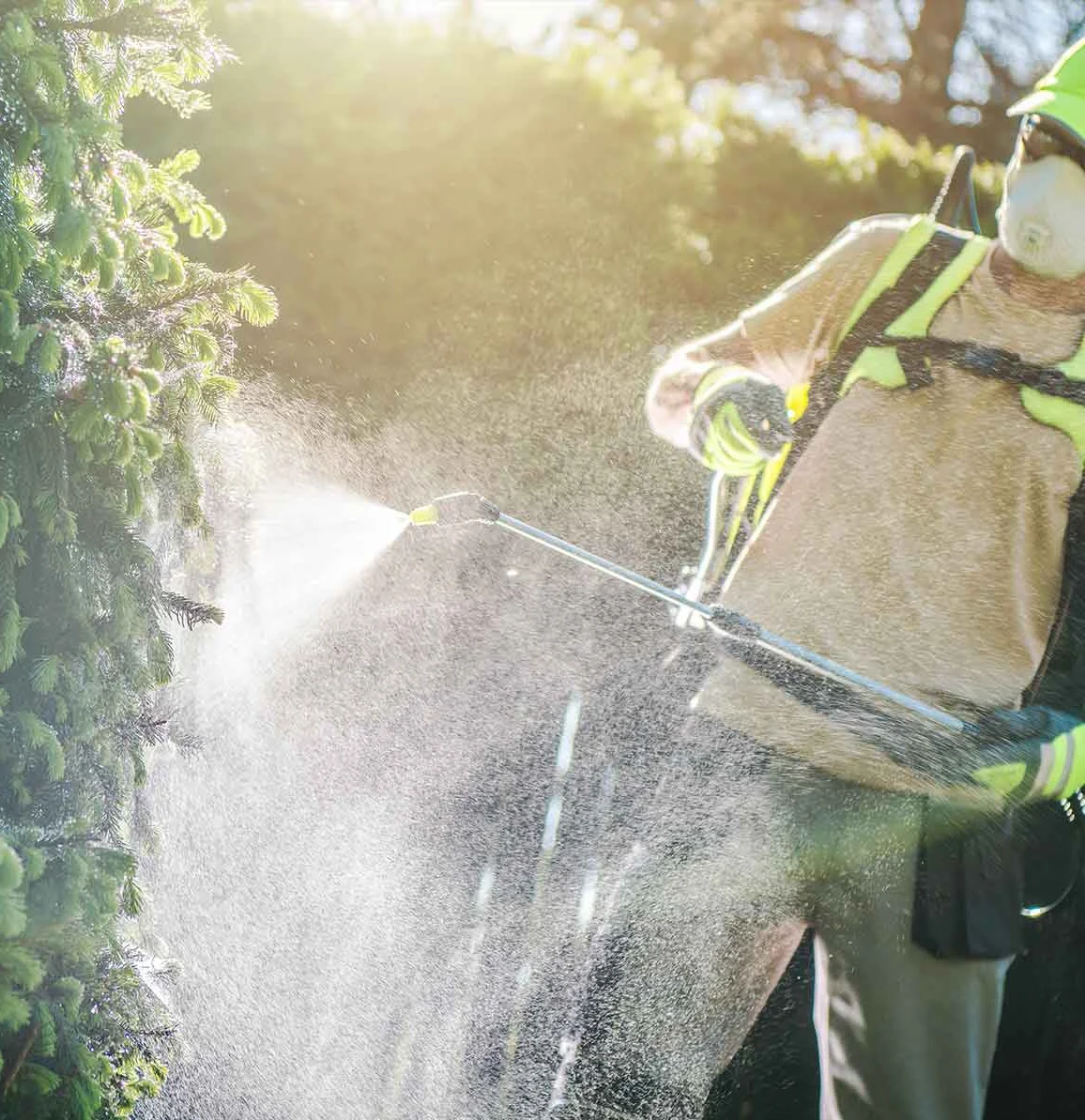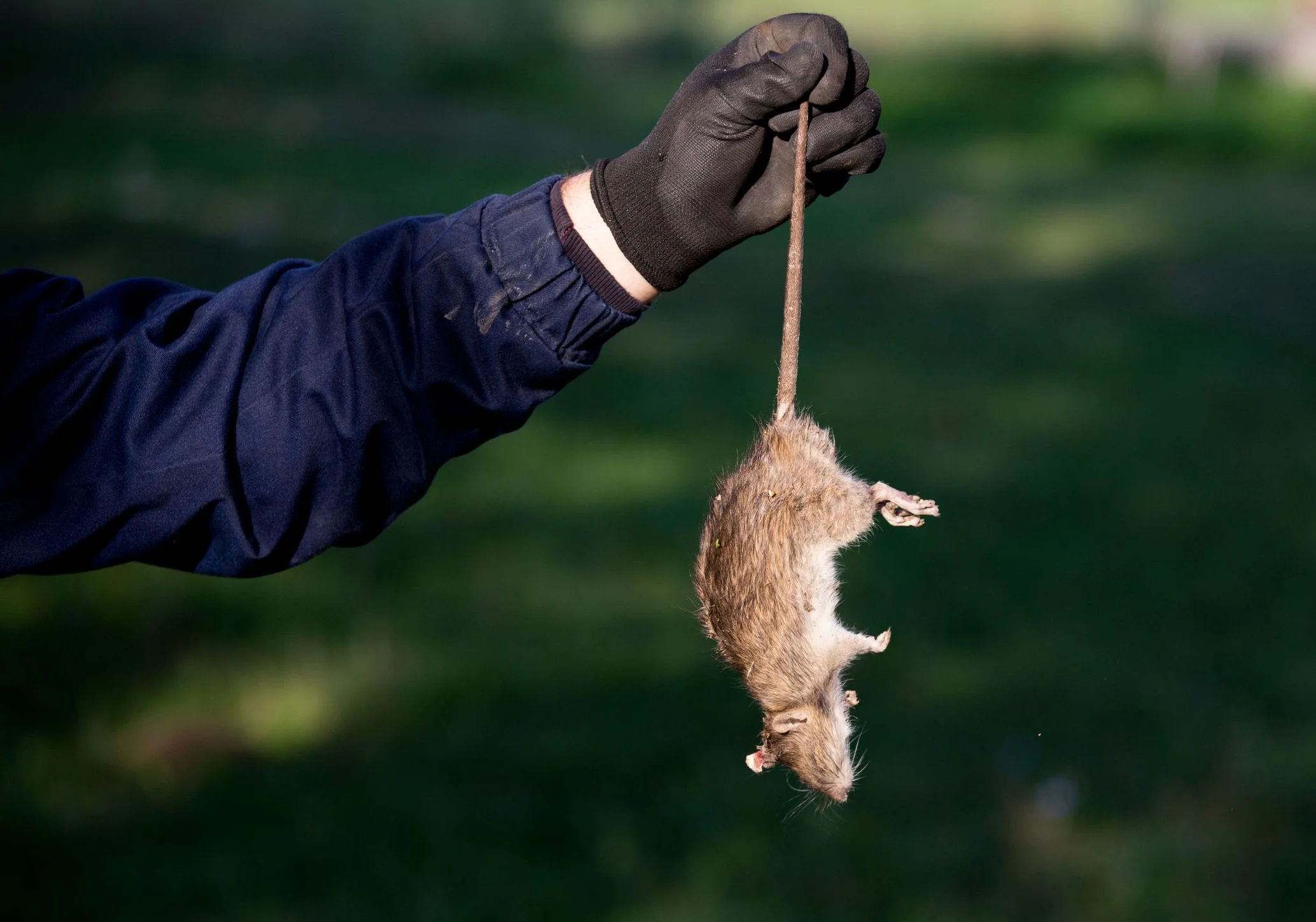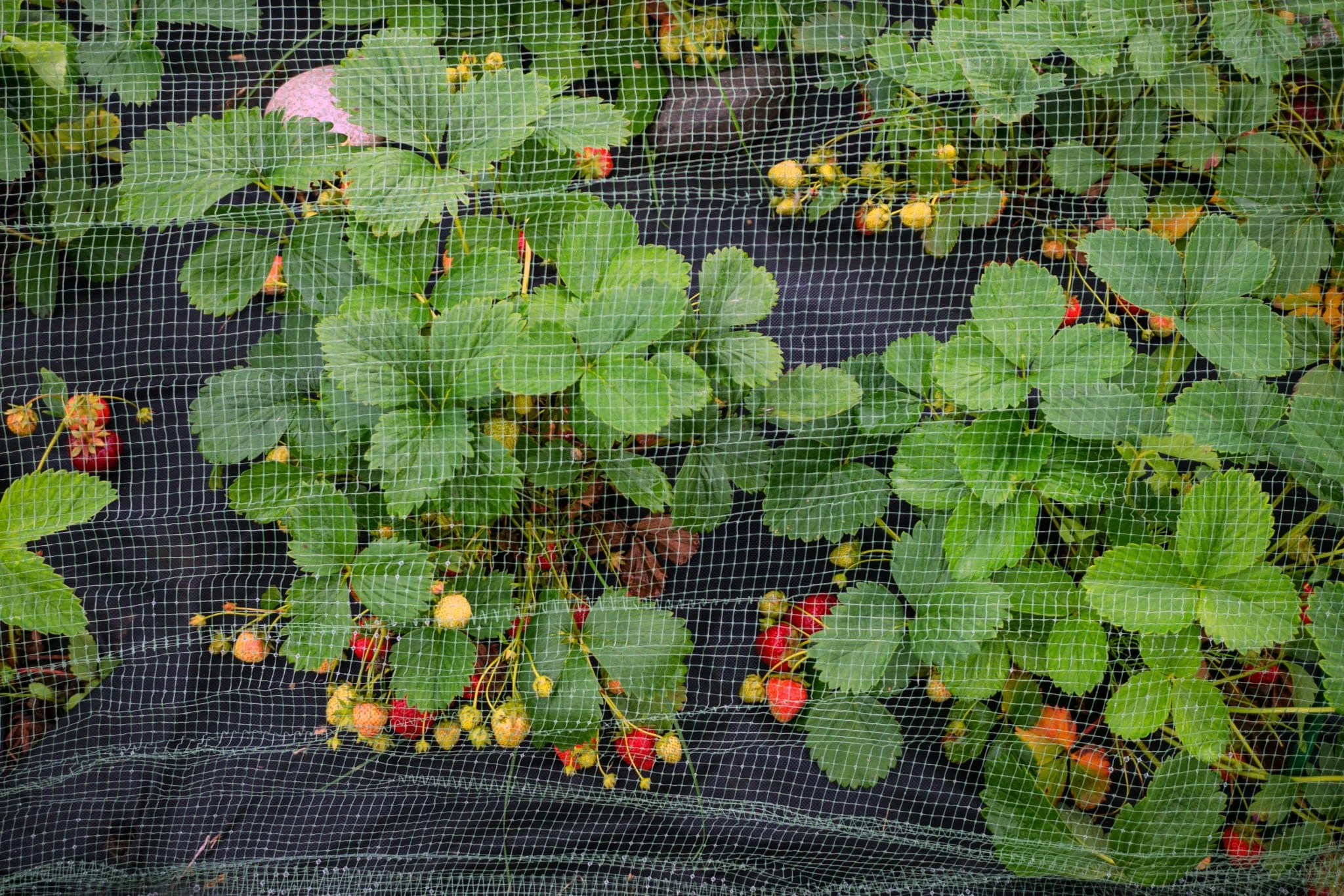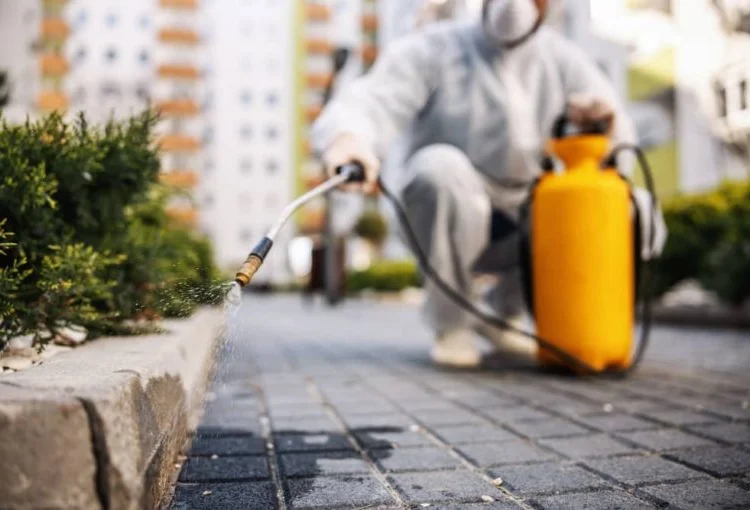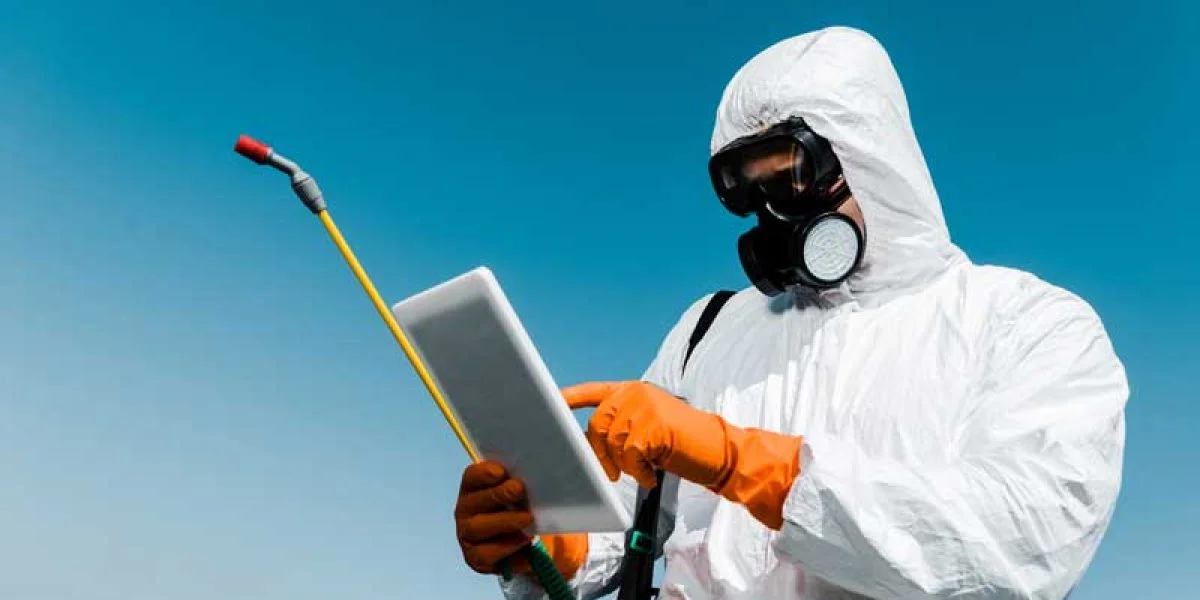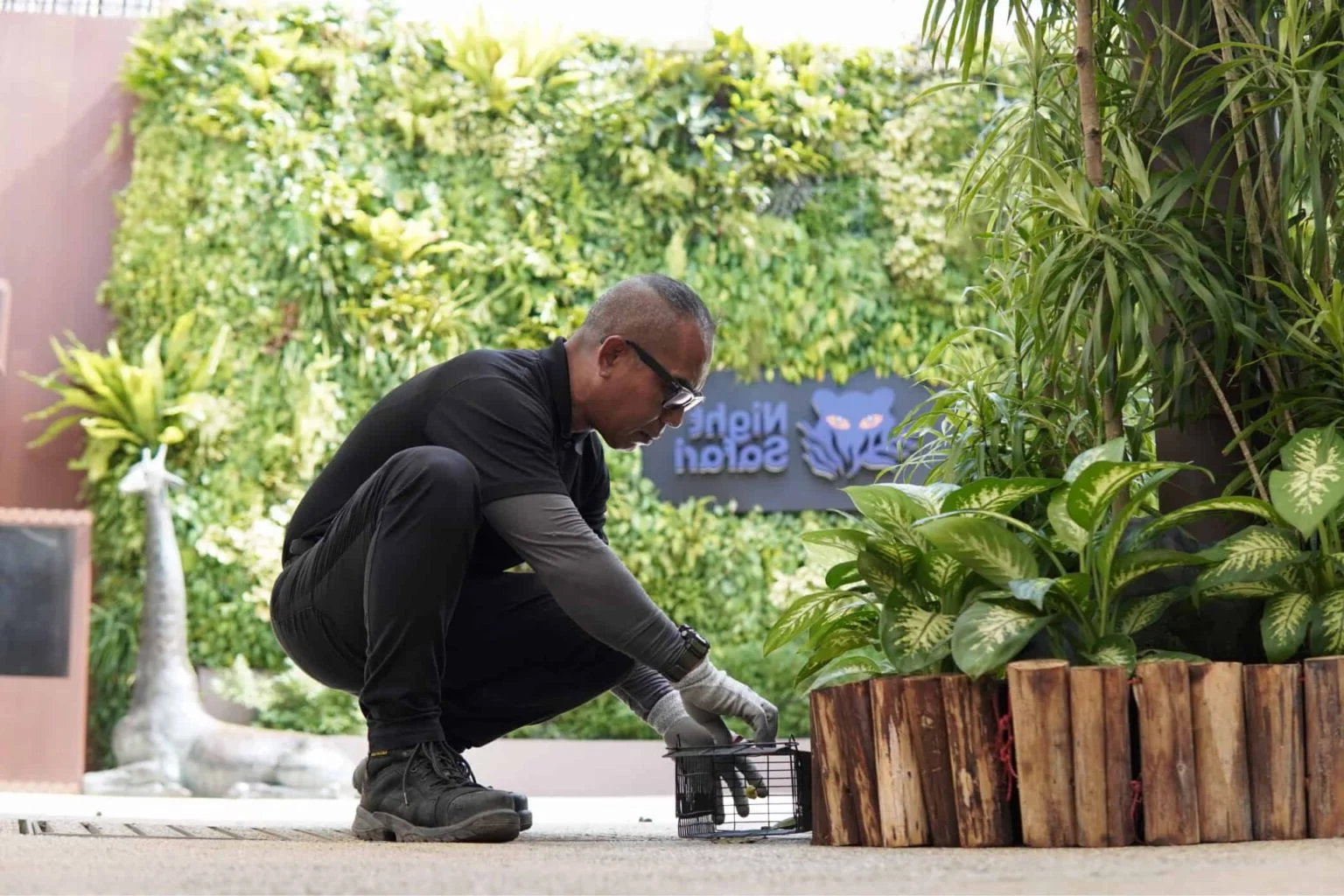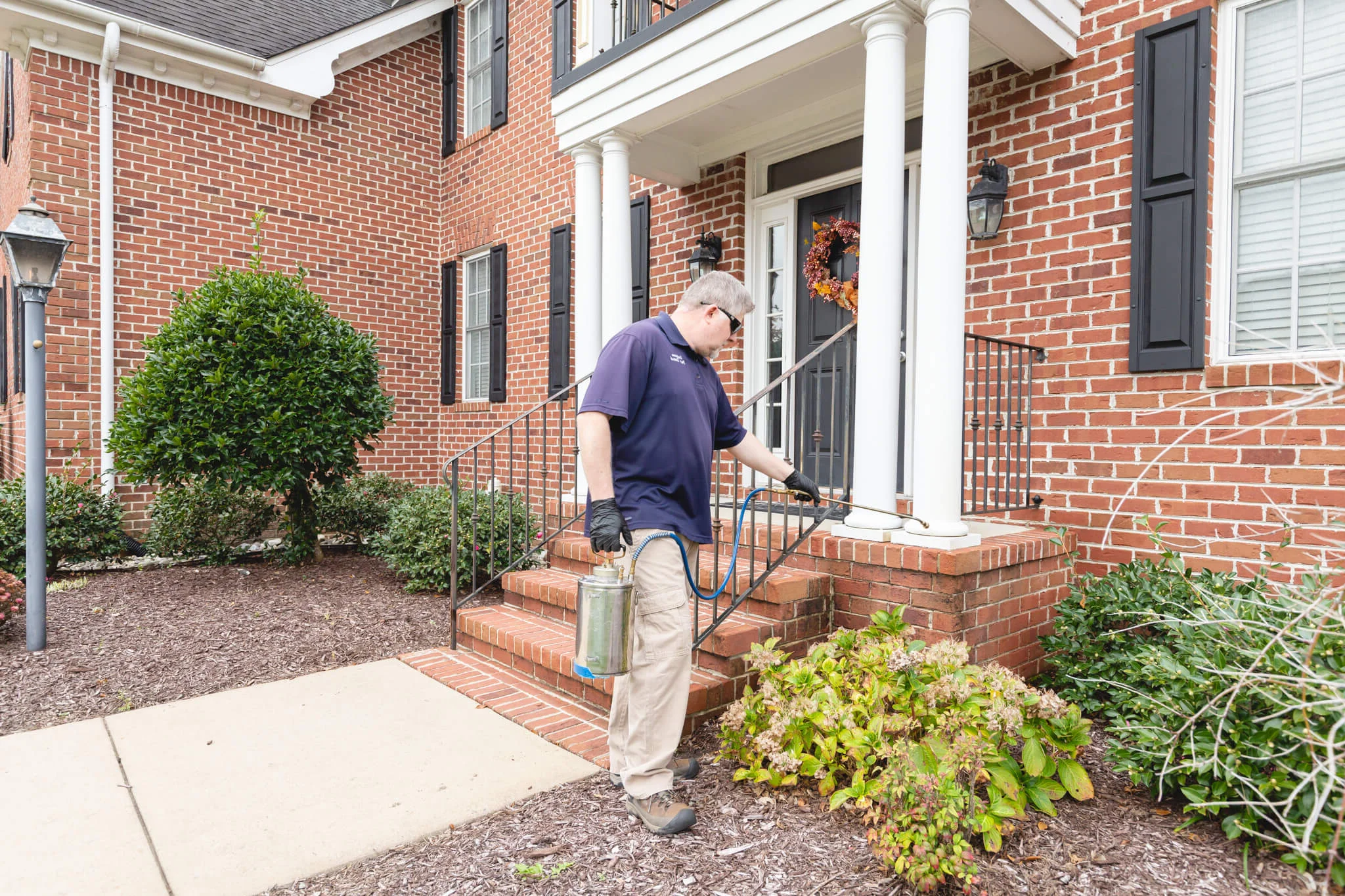From the urban landscapes of Indianapolis to the agricultural heartland of central Indiana and the rolling hills of the southern regions, the Hoosier State presents diverse pest environments that challenge property owners throughout the year. Indiana's four-season climate—marked by humid summers and cold winters—creates ideal conditions for numerous pest species to thrive, with pronounced activity cycles that follow the state's seasonal patterns. Effective pest control in Indiana requires specialized knowledge of regional ecosystems, urban-rural dynamics, and targeted approaches for the state's varied landscapes and construction styles.
Properties across Indiana face ongoing pest pressures that can damage structures, impact health, compromise agricultural production, and diminish quality of life. Whether addressing termite threats in southern Indiana's wooded areas, managing rodent issues in Indianapolis neighborhoods, or controlling agricultural pests that affect rural communities, local professional exterminators provide essential expertise tailored to Indiana's specific regional challenges. This guide explores common Hoosier State pest problems, effective control strategies including eco-friendly pest solutions, and why professional knowledge of Indiana's unique environmental conditions delivers superior long-term protection for homes and businesses.
Dealing with persistent Indiana pests? Our Hoosier State specialists offer
emergency pest control
24/7 and thorough
property inspections throughout Indiana.
Contact us today for prompt assistance!
Pest Control Challenges Specific to Indiana
Indiana's unique environment creates distinctive pest control challenges that require specialized approaches. Here's why pest management in the Hoosier State demands expert attention:
-
Geographic diversity Indiana's landscape transitions from the Lake Michigan shoreline in the north to the Ohio River valley in the south, creating dramatically different ecosystems within the state. This geographic diversity supports varied pest populations and behaviors, requiring region-specific control strategies for northern lake regions, central agricultural areas, and southern woodlands.
-
Pronounced seasonal transitions Indiana experiences all four seasons distinctly, with temperature variations exceeding 100 degrees annually. These seasonal shifts trigger predictable pest migration patterns—spring emergence, summer breeding cycles, fall invasion periods, and winter shelter-seeking behaviors—each requiring targeted prevention strategies timed to Indiana's climate patterns.
-
Agricultural influence As a major agricultural producer, Indiana's extensive farming operations affect pest dynamics even in residential areas. Seasonal planting, growing, and harvesting activities can displace field pests toward structures, while grain storage facilities become focal points for certain pest populations that may spread to surrounding properties.
-
Urban-rural interfaces Indiana's expanding suburban communities create extensive boundaries between developed areas and agricultural or natural landscapes. These transition zones experience unique pest pressures as displaced wildlife and insects from disturbed habitats seek new territory, particularly in growing communities around Indianapolis, Fort Wayne, and other developing areas.
-
Waterway corridors Major water features—including Lake Michigan, the Ohio River, the Wabash River, and numerous inland lakes—create moisture-rich environments supporting mosquito breeding, fostering termite activity, and attracting water-seeking pests. Properties near these waterways face increased pressure from moisture-dependent pests, particularly during Indiana's humid summer months.
Understanding these Indiana-specific challenges is crucial for effective pest management. Professional pest control services develop customized treatment plans that address these regional factors, providing targeted protection for the Hoosier State's distinctive environmental conditions.
Common Pests in Indiana
Indiana's varied regions and four-season climate support numerous pest species that impact properties differently based on location, season, and surrounding environment. Here are the most common invaders that plague the Hoosier State:
Termites
Professional termite inspection being conducted on an Indiana property
Eastern subterranean termites pose a significant threat to Indiana properties, causing millions in structural damage annually. The Hoosier State falls within the moderate-to-heavy termite infestation zone, with activity particularly intense in southern counties where slightly warmer temperatures extend the seasonal activity period. Even northern Indiana experiences substantial termite pressure, with established colonies found throughout the state.
Professional termite inspection and treatment combines thorough structural evaluation, soil treatment barriers, targeted colony elimination, and ongoing monitoring systems. For Indiana's many older homes with crawlspaces and basements, specialized inspection techniques identify hidden termite activity, while preventative treatments provide long-term protection against these destructive pests. Spring termite swarms, typically occurring from March through May depending on regional temperatures, signal peak reproductive activity and heightened risk for new colony establishment.
Mosquitoes
Mosquito treatment being applied in an Indiana residential yard
Indiana's abundant water features and humid summer climate create ideal breeding conditions for numerous mosquito species. These biting pests emerge as temperatures consistently warm above 50°F in spring and remain active until fall frost, with peak activity during July and August when humidity levels are highest. Beyond the nuisance they create for outdoor activities, Indiana mosquitoes can transmit West Nile virus and other diseases, presenting public health concerns during peak season.
Effective mosquito control combines habitat management to eliminate standing water, targeted larvicide treatments for permanent water features, and strategic adult mosquito treatments around landscape features and outdoor living spaces. Professional services create customized treatment schedules matching Indiana's regional mosquito patterns, allowing families to reclaim outdoor enjoyment during warm months when mosquito activity would otherwise restrict outside activities.
Rodents
Professional rodent control measures being implemented at an Indiana home
Indiana properties contend with several rodent species, with house mice and Norway rats most common in urban areas, while deer mice more frequently affect rural properties. These persistent pests seek indoor shelter as temperatures drop in fall, with invasion pressure intensifying after harvest activities displace field populations from agricultural areas. Once established indoors, rodents can damage insulation, wiring, and structural materials while creating health concerns through contamination.
Comprehensive rodent control begins with thorough inspection to identify entry points, harborage areas, and activity patterns. Professional management combines exclusion work to seal potential access routes, targeted trapping systems, protected baiting methods where appropriate, and ongoing monitoring to prevent reinfestation. For Indiana's older homes, specialized approaches address complex structural features that can harbor rodents, while newer properties benefit from preventative perimeter protection during critical fall invasion periods.
Brown Recluse Spiders
Indiana falls within the natural range of brown recluse spiders, particularly in southern counties where these medically significant arachnids can establish populations in undisturbed areas of homes and outbuildings. Unlike common house spiders, brown recluse spiders present medical concerns due to their potentially harmful bites, making professional identification and management important for affected properties.
Professional spider control for brown recluse requires specialized inspection methods focusing on likely harborage areas including attics, crawlspaces, storage areas, closets, and outbuildings where these reclusive spiders typically hide. Effective management combines habitat modification to reduce harborage opportunities, targeted treatments of activity zones, web removal, and careful inspection of stored items where these spiders often remain hidden. For properties with confirmed infestations, comprehensive treatment programs address both the structure and surrounding landscape to reduce population levels.
Overwintering Pests
Applying preventative treatment for overwintering pests on an Indiana home
Indiana's cold winters drive several insect species to seek shelter in structures during fall months. Box elder bugs, brown marmorated stink bugs, multicolored Asian lady beetles, and cluster flies commonly invade homes and businesses as temperatures drop, congregating on sun-warmed exterior walls before finding entry points into attics, wall voids, and living spaces. While not structurally damaging, these seasonal invaders emerge indoors throughout winter during warm periods, creating persistent nuisance situations.
Successful management requires precisely timed preventative treatments applied before invasion periods begin, typically in early fall before the first frost. Professional services include exterior treatments of gathering areas, targeted applications to likely entry zones, and exclusion work to seal access points. For Indiana properties with historical issues, comprehensive prevention programs during the critical pre-invasion window provide reliable protection against these predictable seasonal pests.
Eco-Friendly Pest Control for Indiana Properties
Indiana's diverse natural resources—from Lake Michigan to the Ohio River watershed and numerous conservation areas—create strong demand for environmentally responsible pest management approaches. Modern eco-friendly pest solutions protect homes and businesses while minimizing environmental impact through targeted application methods, reduced-risk product selections, and integrated management strategies that address root causes rather than symptoms.
Professional services implement Integrated Pest Management (IPM) principles that prioritize inspection, exclusion, habitat modification, and biological controls when possible, reserving targeted chemical interventions as a last resort. This sustainable methodology particularly benefits families with young children, pet owners, properties near sensitive ecosystems, homes with organic gardens, and structures in watershed protection areas throughout the state.
Environmental Commitment
Indiana pest control specialists understand the importance of protecting the state's valuable natural resources, implementing management approaches that effectively address pest issues while respecting the Hoosier State's environmental integrity.
Below is a comparison of different eco-friendly pest control methods highlighting their benefits for Indiana properties:
| Treatment Method |
Benefits |
Ideal Use in Indiana |
| Targeted Application Methods |
Places minimal product amounts only where pests travel, harbor, or enter structures, dramatically reducing overall chemical use while maintaining effectiveness.
|
Urban properties where minimizing chemical exposure is important, homes with children and pets, and properties near Indiana's numerous waterways and watershed protection areas.
|
| Exclusion Techniques |
Creates physical barriers preventing pest entry without any chemical use, providing long-term protection with zero environmental impact or ongoing maintenance requirements.
|
Rodent prevention in both urban and rural properties, sealing against seasonal invaders like overwintering insects, and securing structures against wildlife intrusions—particularly valuable during Indiana's pronounced seasonal transitions.
|
| Habitat Modification |
Alters environmental conditions that attract and support pest populations through landscape changes, moisture management, and sanitation improvements rather than chemical interventions.
|
Mosquito reduction through water management, rodent prevention through vegetation control, and termite deterrence through moisture mitigation—especially important in Indiana's humid summer conditions.
|
| Biological Controls |
Utilizes natural predators, beneficial nematodes, or microbial agents to manage pest populations in environmentally sensitive ways with minimal non-target impacts.
|
Agricultural interfaces, properties near conservation areas, and sensitive watershed regions where conventional chemical approaches might impact water quality or wildlife.
|
| Reduced-Risk Products |
Employs newer generation pesticides and botanical-based solutions designed specifically for lower environmental impact with faster environmental breakdown.
|
Properties near Indiana's lakes and rivers, homes with organic gardens, and communities with specific environmental protection ordinances requiring reduced-risk approaches.
|
Residential & Commercial Pest Control Throughout Indiana
Residential Pest Protection
Indiana homes face varied pest challenges influenced by location, architectural style, and surrounding environment. Residential pest protection programs are tailored to address the specific needs of different Indiana properties, from Indianapolis urban neighborhoods to suburban communities, small towns, and rural homesteads throughout the state.
Professional services offer customizable protection plans against Indiana's most common household pests, with particular emphasis on preventing seasonal invaders, eliminating termite threats, and maintaining comfortable living spaces free from nuisance and health-threatening pests. Treatment schedules align with Indiana's distinct seasonal patterns, with increased attention during critical transition periods when pest pressure intensifies due to changing weather conditions.
Commercial Pest Control
From restaurants in Indianapolis to healthcare facilities in Fort Wayne, manufacturing operations in Evansville, food processing facilities in Central Indiana, and educational institutions throughout the state, Indiana businesses require specialized pest management programs that protect operations, reputation, and regulatory compliance. Commercial pest control services address distinct industry challenges with targeted protocols designed for each business category.
Professional commercial services provide comprehensive documentation supporting audit requirements, discreet service scheduling that minimizes operational disruption, and emergency response capabilities for time-sensitive situations. Indiana's substantial food production, processing, and manufacturing sectors particularly benefit from specialized programs designed to maintain the highest standards of sanitation and pest prevention while meeting stringent regulatory requirements.
From residential pest protection plans to customized
commercial pest control solutions, we have properties throughout Indiana covered –
schedule your service now and keep your
property pest-free year-round!
Why Choose Local Experts in Indiana?
When it comes to protecting your Indiana property from pests, working with local experts offers distinct advantages. A local pest control company understands the region's specific challenges and truly cares about the communities they serve. Here's why choosing local Indiana specialists makes a significant difference:
-
Knowledge of regional pest patterns Local technicians understand how Indiana's diverse regions—from the Lake Michigan shoreline to the Ohio River valley—experience different pest pressures and seasonal cycles. This regional expertise allows for precisely targeted treatments and timing based on local experience rather than generic approaches used by national companies unfamiliar with Hoosier State specifics.
-
Experience with Indiana architecture Local experts are familiar with the distinctive construction methods found throughout the state, from historic homes in older communities to mid-century developments and contemporary construction. This architectural knowledge helps identify vulnerable areas and implement effective protection strategies specifically suited to each property type.
-
Understanding of seasonal timing Indiana's pronounced seasonal transitions create predictable pest activity windows that vary across the state. Local professionals know exactly when different seasonal pests become active in specific regions, allowing for precisely timed preventative treatments before problems develop, rather than reacting after infestations establish.
-
Familiarity with local regulations Indiana communities maintain specific regulations regarding pesticide applications, wildlife management, and treatment methods, particularly in watershed protection areas and conservation zones. Local pest professionals navigate these requirements daily, ensuring all services remain fully compliant with state and municipal ordinances.
-
Community connection Local Indiana companies live in the same communities they serve, creating accountability and long-term relationships built on trust. This local presence means faster response times for urgent issues, personalized service from technicians who know your property, and genuine investment in protecting Indiana neighborhoods where they also live and work.
By choosing local professional exterminators with deep knowledge of Indiana's specific pest challenges, property owners receive more effective, regionally-appropriate solutions than generic approaches used by those unfamiliar with the Hoosier State's unique conditions.
Regional Pest Control Services Throughout Indiana
Different regions of Indiana face unique pest challenges based on geography, climate variations, and environmental features. Professional pest control specialists understand these regional differences:
Central Indiana
Including: Indianapolis, Carmel, Fishers, Noblesville, Greenwood, Plainfield, Westfield
The state's most populated region combines urban density with rapidly expanding suburban communities, creating diverse pest challenges. Indianapolis and surrounding communities contend with established urban pest populations including rodents and cockroaches in older neighborhoods, while newer developments often disrupt existing pest habitats during construction. The region's mix of older homes and newer construction requires varied treatment approaches, while the interface between developed areas and remaining agricultural operations creates migration corridors for certain pest species, particularly during seasonal transitions.
Northern Indiana
Including: Fort Wayne, South Bend, Elkhart, Hammond, Gary, Michigan City, Mishawaka
Northern Indiana's proximity to Lake Michigan and numerous inland lakes creates moisture conditions supporting mosquito populations and other moisture-dependent pests. This region experiences colder winters and more lake-effect precipitation than southern parts of the state, affecting seasonal pest cycles and treatment timing. Urban areas like Fort Wayne and South Bend contend with established pest populations in older neighborhoods, while the industrial legacy of some northern communities can present unique structural challenges for pest management due to complex building designs and varied construction methods.
Southern Indiana
Including: Evansville, Bloomington, New Albany, Jeffersonville, Columbus, Terre Haute
The rolling terrain of southern Indiana, with its greater tree cover and slightly warmer climate, creates distinct pest pressures. Termite activity increases in this region compared to northern areas due to longer warm seasons and greater woodland interfacing with developed properties. The Ohio River corridor supports different pest populations than inland areas, while the karst topography in some southern counties creates unique moisture patterns affecting subterranean pest activity. Bloomington and other university communities face particular challenges with multi-unit housing and seasonal occupancy patterns in student neighborhoods.
Eastern Indiana
Including: Richmond, Muncie, Anderson, Connersville, New Castle
Eastern Indiana combines smaller urban centers with rural communities and agricultural operations. The region's mix of manufacturing heritage and farming influence creates varied pest management needs, with older industrial structures in cities like Muncie and Anderson presenting different challenges than the region's rural properties. Agricultural activities affect pest dynamics in both rural and urban settings, while the area's river systems create moisture corridors that support certain pest populations and seasonal movements between habitats.
Top Cities for Pest Control in Indiana
Professional pest control services are available throughout the Hoosier State. Below are some of the major Indiana cities where quality pest management is especially important:
Indianapolis
As Indiana's capital and largest city, Indianapolis presents diverse pest management challenges across its varied neighborhoods and architectural styles. The urban core features historic buildings with complex structural systems that can harbor established pest populations, while older residential areas contend with mature landscaping and aging infrastructure creating harborage opportunities. Rapidly expanding suburban communities experience different pressures as development disturbs existing pest habitats, particularly in areas bordering agricultural operations or remaining natural spaces. The White River corridor creates moisture conditions supporting mosquito populations during warmer months, while the city's extensive park system and green spaces provide habitat for various insect species that can affect nearby properties. Indianapolis properties face year-round pest pressure with pronounced seasonal surges, requiring comprehensive management programs that address both established urban pest populations and seasonal invaders.
Bloomington
This vibrant university community in southern Indiana experiences unique pest management challenges influenced by its woodland setting, limestone terrain, and distinctive occupancy patterns in student housing areas. Bloomington's karst topography creates natural moisture conditions that can support subterranean termite activity, while the surrounding woodlands introduce various forest-dwelling pests to residential properties, particularly those at the urban-forest interface. The large student population creates seasonal occupancy fluctuations in many multi-unit properties, affecting pest establishment patterns and treatment timing. Bloomington's mix of historic structures, mid-century developments, and contemporary construction requires varied management approaches based on building methods and materials. The community's environmental consciousness also drives strong demand for eco-friendly pest solutions that protect both properties and the area's distinctive natural beauty.
Indiana Service Coverage Map
Seasonal Pest Guide for Indiana
Spring (March-May)
- Termite swarms emerge
- Ant colonies become active
- Overwintering pests exit hibernation
- Mosquito breeding begins
Recommendation: Schedule annual termite inspection, implement preventative perimeter treatments as temperatures consistently rise, and address emerging ant colonies before they fully establish.
Summer (June-August)
- Mosquito activity peaks
- Stinging insect colonies expand
- Brown recluse activity increases
- Ant infestations become more visible
Recommendation: Maintain regular mosquito treatments, monitor for wasp nest establishment, and reinforce barriers against summer-active pests during Indiana's hottest season.
Fall (September-November)
- Overwintering insects seek shelter
- Rodents begin moving indoors
- Spider activity increases inside structures
- Final stinging insect surge before winter
Recommendation: Critical window for preventing overwintering pest invasions and implementing rodent exclusion before winter weather arrives.
Winter (December-February)
- Rodent activity concentrated indoors
- Overwintering insects occasionally emerge during warm spells
- Indoor pest issues become more noticeable
- Preparation for spring pest emergence
Recommendation: Focus on interior pest management and exclusion maintenance during Indiana's coldest months.
Indiana's four distinct seasons create predictable patterns of pest activity, with each season presenting different challenges requiring specific preventative approaches. Professional pest control services adjust their strategies throughout the year to address these seasonal patterns, providing ongoing protection during critical transition periods when pest pressure intensifies.
What Our Indiana Clients Say
"After years of seasonal mosquito problems making our backyard unusable during summer evenings, their comprehensive treatment program has completely transformed our outdoor living experience in Fishers. We can finally enjoy our patio throughout the entire summer."
- Jennifer S., Fishers
★★★★★
"Owning a historic home in Bloomington means constant vigilance against termites. Their annual inspection program identified a problem area before any damage occurred, and their targeted treatment approach respected both our property's character and our environmental concerns."
- Michael T., Bloomington
★★★★★
"As a restaurant owner in downtown Indianapolis, pest prevention isn't optional—it's essential for our reputation and health department compliance. Their commercial program provides thorough protection with discreet service that never disrupts our customers' experience."
- David W., Indianapolis
★★★★★
Frequently Asked Questions
How does Indiana's seasonal cycle affect pest control strategies?
Indiana experiences all four seasons distinctly, with each seasonal transition triggering specific pest behaviors requiring adaptive treatment approaches. Spring (March-May) brings termite swarms and ant colony emergence as temperatures consistently exceed 50°F, necessitating preventative perimeter treatments and annual termite inspections during this critical emergence period. Summer (June-August) intensifies mosquito activity and stinging insect colony development, requiring targeted treatments for outdoor comfort and wasp nest prevention. Fall (September-October) creates a critical prevention window as overwintering pests seek shelter and rodents move indoors before winter—this period demands precisely timed applications before the first frost to intercept these seasonal invaders. Winter (November-February) shifts focus to interior management and exclusion maintenance when exterior pest activity diminishes. Our service programs align with these seasonal patterns, adjusting treatment methods, target pests, and application timing based on decades of experience with Indiana's specific climate cycle.
What makes termite risks in Southern Indiana different from Northern regions?
Southern Indiana experiences notably different termite pressure than northern regions due to several key factors. The slightly warmer climate in southern counties extends the annual termite activity season by several weeks compared to northern areas, allowing colonies more active foraging and reproduction time each year. Southern Indiana's greater woodland coverage and karst topography create soil conditions more favorable to subterranean termite activity, with natural moisture patterns supporting established colonies. The region's higher concentration of older structures, particularly in historic communities like Bloomington, New Albany, and Jeffersonville, provides more access to aged wood that termites prefer. Additionally, the Ohio River valley's humidity levels support higher overall termite population density compared to the northern lake regions. While all Indiana properties face termite risk, these regional differences mean southern properties typically require more comprehensive protection strategies and more frequent monitoring to address the intensified pressure.
How should Indiana homeowners prepare for fall pest invasions?
Fall represents a critical prevention window for Indiana homeowners as cooling temperatures trigger significant pest migrations toward structures. We recommend a comprehensive approach beginning in late August to early September—before the first frost but as temperatures begin cooling noticeably. Start with a thorough exterior inspection focusing on potential entry points: seal gaps around utility penetrations, repair damaged door sweeps and weather stripping, install mesh over vents, and address foundation cracks. Reduce harborage areas by moving firewood away from structures, trimming vegetation from exterior walls, cleaning gutters, and eliminating leaf accumulation around foundations. For overwintering insects like box elder bugs and brown marmorated stink bugs that congregate on sunny exterior walls, professional preventative treatments applied to these gathering areas and potential entry zones provide significant protection when timed correctly. For rodent prevention, consider professional exclusion services that identify and seal potential entry points before mice and rats begin seeking winter shelter. Taking these steps during the critical late summer/early fall window provides much better protection than reacting after pests have already established indoor populations.
Are your treatments safe for families, pets, and Indiana's waterways?
Absolutely. Our Indiana technicians receive extensive training in modern, environmentally responsible pest management approaches that effectively control pests while minimizing impact on non-target organisms. We utilize several key strategies to ensure safety: precision targeting that places products only where pests travel or harbor (leaving most areas untreated), establishing buffer zones around sensitive areas like play equipment and pet spaces, selecting products that break down rapidly in the environment, and emphasizing non-chemical control methods wherever possible. For properties near Indiana's abundant waterways—including Lake Michigan, the Ohio River, the Wabash River, and local watersheds—we implement additional precautions including specialized application methods and product selections designed specifically to protect water quality. All of our service protocols comply with Indiana environmental regulations and watershed protection guidelines while still providing effective pest management for your property. We're particularly mindful of Indiana's unique ecosystems and agricultural importance, implementing approaches that protect both your property and the state's environmental integrity.


